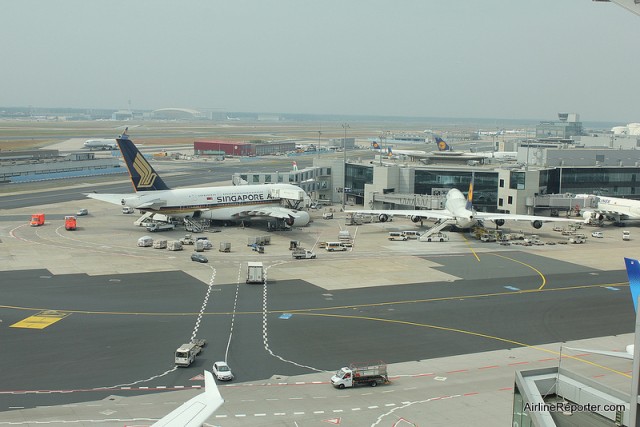
A Singapore Airlines Airbus A380 and Lufthansa Boeing 747-400 – Photo: David Parker Brown
2013 is now well in our rear view mirrors as we speed along the runway of another year and it is time to look back. We have covered what we did during 2013 on AirlineReporter but what about looking at what our two favorite aircraft manufacturers did? 2013 were big years for both Boeing & Airbus on many levels, so let’s take a look at more detail of exactly what happened in the order & delivery world:
Orders:
In 2013, the big air shows in Paris & Dubai flooded the order books of both manufacturers. Airbus and Boeing both had record-breaking years with 1,619 & 1,531 gross orders, respectively. The winner in this situation is obviously Airbus by a good margin; the types of orders look consistent too:
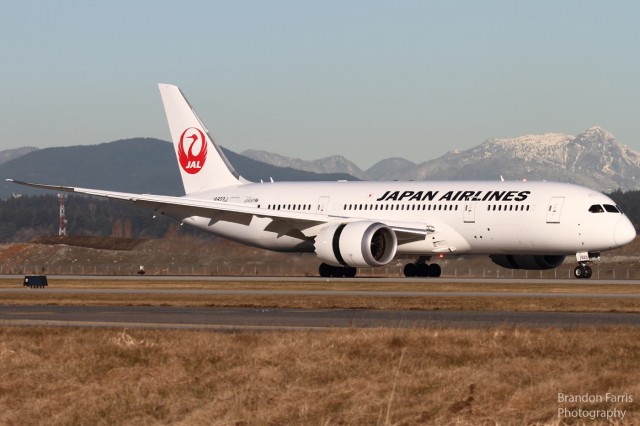
JAL 18 touches down at YVR Airport – Photo: Brandon Farris | AirlineReporter
In what turned out to be a beautiful Monday morning in Vancouver, British Columbia, reporters and the Vancouver Airport Authority greeted the airport’s first scheduled 787 service with Japan Airlines.
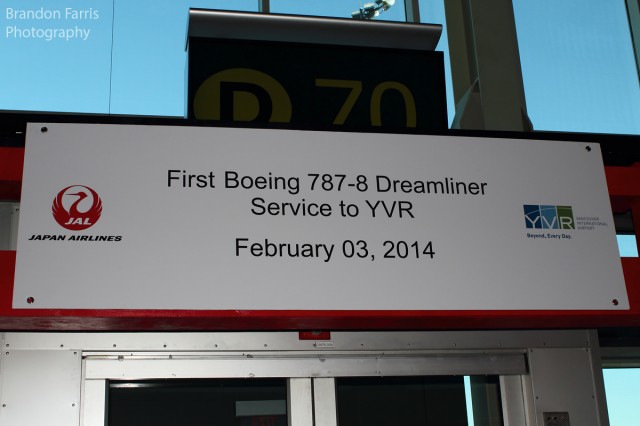
Banner welcoming passengers onboard – Photo: Brandon Farris | AirlineReporter
The conditions couldn’t have been any better for the carrier’s first arrival with the aircraft, as the skies were clear when the pilots flared the nose and gracefully put the aircraft (JA823J) on the ground 15 minutes ahead of schedule, to the delight of many who have been working hard on bringing the 787 to YVR.
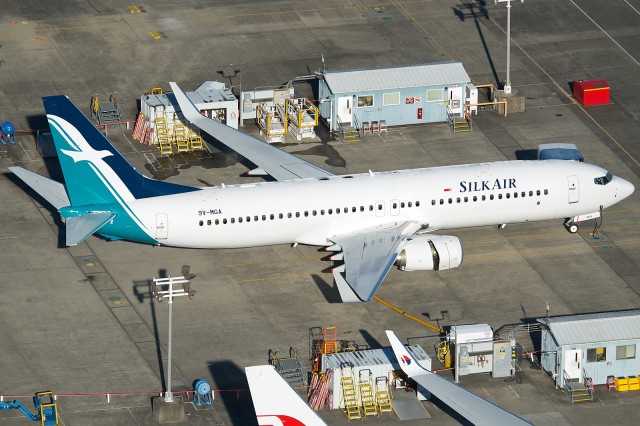
Side view of SilkAir’s first Boeing 737-8SA – Photo: Bernie Leighton | AirlineReporter
February 21, 1989 was an important day for Singapore Airlines. On that day, their regional affiliate Tradewinds Airlines took off using MD-87s for previously unserved Southeast Asian destinations like Bandar Seri Begawan.
Tradewinds continued until 1992 when it was renamed SilkAir. If you have not noticed, it is almost February 21, 2014. In other words, we are quickly approaching the twenty-fifth anniversary of SilkAir. On top of that, this is also the Chinese Lunar New Year period. There is a lot to celebrate at SilkAir. Most of all, the delivery of their first Boeing 737-8SA.
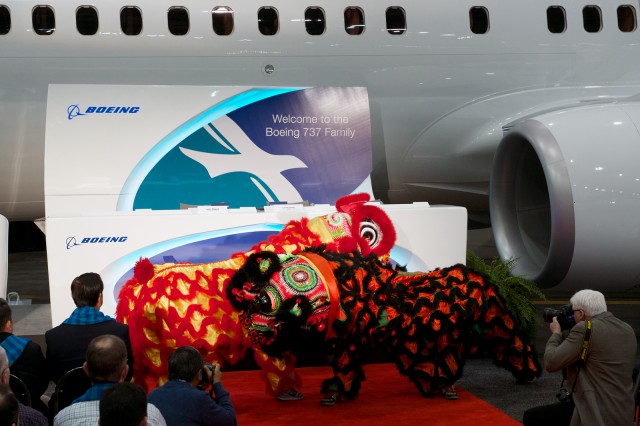
A Chinese Lion Dance to bring in the new year and celebrate a new era of SilkAir – Photo: Bernie Leighton | AirlineReporter
SilkAir is celebrating a lot of firsts with delivery of 9V-MGA (internally referred to as “my great aircraft”). Their first 737 NextGen, their largest aircraft order (54 frames), and their fastest year-on-year fleet growth (they are accepting eight frames this year).
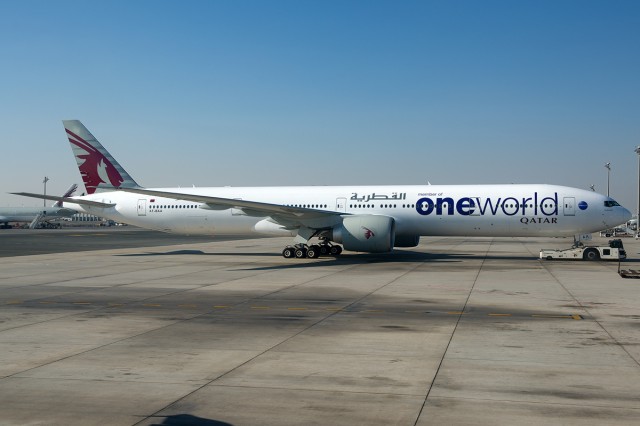
One of Qatar’s two 0neworld 777s viewed from the window of a QR A320 – Photo: Bernie Leighton | AirlineReporter
A few days before departing for Warsaw, I had a stark realization – I actually had no reason to be in Poland other than a milage run. Polish Christmas is not what we are familiar with here in North America. Indeed, the idea of potentially-radioactive Belorussian carp as my main feast for such a joyous occasion caused me some dismay. I admit, there are plenty of amazing things to do in Poland (including two great military and aviation museums) – just not on Christmas Eve or Christmas Day. Both days, the entire country – including the trains – more or less grinds to a halt.
Now, I could have spent a couple of days in a hotel in downtown Warsaw, and maybe gone shopping before my return home. But practicality is not, and never will be, how I solve problems. My original goal was to fly on Biman’s DC-10 from Kuala Lumpur back to Dacca, but I couldn’t make the times work. After a call with my usual travel agent (who has come to understand that I have a flare for the weird), I discovered that I could, within the window of my original British Airways fare to and from Poland go on a day trip to Singapore! I also had another goal – could I do it for a similar cost to a week of peak rate hotel time at a luxury hotel in Warsaw? Thanks to Polish currency (3 Zloty =1 USD) I could, and what an itinerary I booked!
We at AirlineReporter have always been fans of Qatar Airways; it was high time I found out what the fuss was about, starting with their Airbus narrow-body fleet. To say the least, I was excited. I had heard nothing but great things about Qatar’s business class from our other staff members. I am, probably, the harshest and most pedantic critic on the AirlineReporter staff. If you are already bored of the article, I can summarize my experience with QR in one word. AMAZING! If you are interested in why, please do continue.

Southwest Boeing 737-700 taxing at KPAE
In the summer, my wife and I were planning a Christmas trip to Disneyland with our two toddlers (ages 2 and 4). We were looking to get out of cold Denver for the holidays, and had visited Disneyland in December a few years ago and thought all of the decorations were really cool. We decided to pull the trigger in late summer and I went work booking our travel.
I’m a very loyal United Airlines flyer, being Denver-based, and try to fly them exclusively. However, flights to the Los Angeles-area at Christmas, even months in advance, were ridiculously expensive. I’ve also recently come to grips with the fact that, having a newly-two-year-old daughter, four airline tickets really start to add up. So, I looked at the options on Southwest Airlines (WN) and was shocked – less than $200 round-trip for direct flights between Denver (DEN) and Orange County (SNA), which was less than half the cost of other options. I had never booked myself on WN, but couldn’t pass up the huge cost difference, especially for such a short flight. (Note – since I booked my “first” WN flights, I actually ended up flying on them to the Bahamas on a short-notice trip).






